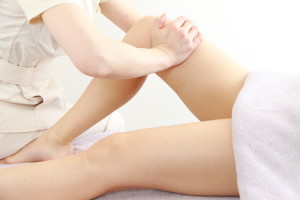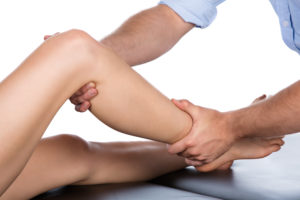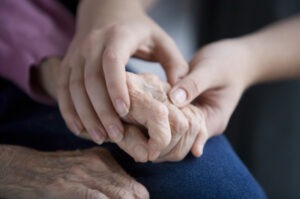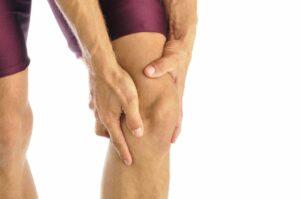 Sports activities can sometimes cause injuries or lead to joint or tissue damage over an extended period of time. Conditions caused due to sports activities should be treated by a specialist who is fully trained to address these problems in a safe and effective manner.
Sports activities can sometimes cause injuries or lead to joint or tissue damage over an extended period of time. Conditions caused due to sports activities should be treated by a specialist who is fully trained to address these problems in a safe and effective manner.
Some of the common sports related injuries include ACL, Shoulder Labrum, Rotator cuff, Clavicle, Total Knee Replacement, Meniscus Tears, Knee Arthritis, Baker’s Cyst, Cartilage Damage, Exertional Compartment Syndrome, Patella Dislocation, Knee Injury Prevention, Frozen Shoulder, AC Joint Seperation.
The Knee and Shoulder Institute
The Knee and Shoulder Institute, led by Dr. Steven Thomas and Dr. Gregory Bigler, who are board certified orthopedic surgeons with expertise in sports medicine, provides treatments for various sports related and other conditions to patients in Las Vegas, Nevada and surrounding communities across the landscape.
The practice of Dr. Thomas and Dr. Bigler is equipped to provide state of the art orthopedic care for sports injuries. The practice offers cutting edge integrated services, including clinical orthopedics, physical therapy, outpatient arthroscopy and surgery center, and radiology/lab to ensure that every patient has access to the latest and comprehensive diagnosis and treatment facilities.
Dr. Steven C. Thomas
Dr. Thomas completed medical school and research at Johns Hopkins in 1984. Following his residency, he pursued fellowship training in surgery of the shoulder and elbow and to complete his research in cruciate ligament reconstruction and sports injuries of the knee.
He then acquired a traveling fellowship in arthroscopic treatment of knee and shoulder injuries. He trained with Dr. Russell Warren, team physician for the New York Giants professional football team.
The emphasis of the practice of Dr. Thomas is on sports injuries and arthroscopic treatment of knees and shoulders, although he does address general orthopedic problems as well. In addition to his board certification in orthopedic surgery, he also holds a Subspecialty Certificate in Orthopedic Sports Medicine. He has performed over 30,000 surgeries until date, and he does all of his own surgeries.
Dr. Gregory T. Bigler
Dr. Bigler is a remarkable and percipient board certified orthopaedic surgeon, fellowship trained in sports medicine and arthroscopy. He has been practicing in Las Vegas for over 25 years. Following his orthopedic training, Dr. Bigler completed a sub-specialization in the area of sports medicine and arthroscopy. He accomplished his sports medicine and arthroscopy fellowship at Harvard Medical School at the Massachusetts General Hospital.
During his fellowship period, he helped to take care of the New England Patriots football team, the Boston Bruins hockey team, as well as the Harvard athletic teams. Dr. Bigler was among six physicians selected nationally to do a traveling fellowship where he traveled the world learning and teaching orthopedic techniques.
Dr. Bigler has been a team physician in the UNLV Athletic Department and with the CSN teams as well. He has served on the San Diego Padres physician staff, and also as the Nevada delegate for the American Orthopedic Society for Sports Medicine. The dependable and terrific Dr. Steven and Dr. Bigler receive patients from Las Vegas, Nevada and nearby areas for the treatment of sports injuries and other knee and shoulder problems.
If you would like to schedule an appointment or learn more about the Knee and Shoulder Institute procedures & treatments performed by Las Vegas, Nevada board certified surgeons Steven C. Thomas, MD and Gregory T. Bigler, MD. call (702) 933-9393; Physical Therapy (702) 933-9393.

 Stem cell therapy is a new and upcoming form of medicine that makes use of healthy regenerative cells found in the body to support tissue regeneration. It can trigger the healing process to repair and replenish the cells that have been damaged and degenerated due to orthopedic problems such as joint injury and arthritis.
Stem cell therapy is a new and upcoming form of medicine that makes use of healthy regenerative cells found in the body to support tissue regeneration. It can trigger the healing process to repair and replenish the cells that have been damaged and degenerated due to orthopedic problems such as joint injury and arthritis.  Stem cell therapy offers as an innovative non-surgical alternative to address a variety of
Stem cell therapy offers as an innovative non-surgical alternative to address a variety of  Stem cell therapy has emerged as a highly innovative, non-surgical alternative to treat degenerated joints affected by arthritis. Stem cells are present within the patient’s own body, and perform the function of promoting the healing process of the degenerated tissue.
Stem cell therapy has emerged as a highly innovative, non-surgical alternative to treat degenerated joints affected by arthritis. Stem cells are present within the patient’s own body, and perform the function of promoting the healing process of the degenerated tissue.  Stem cell therapy has emerged as a promising treatment for
Stem cell therapy has emerged as a promising treatment for 

